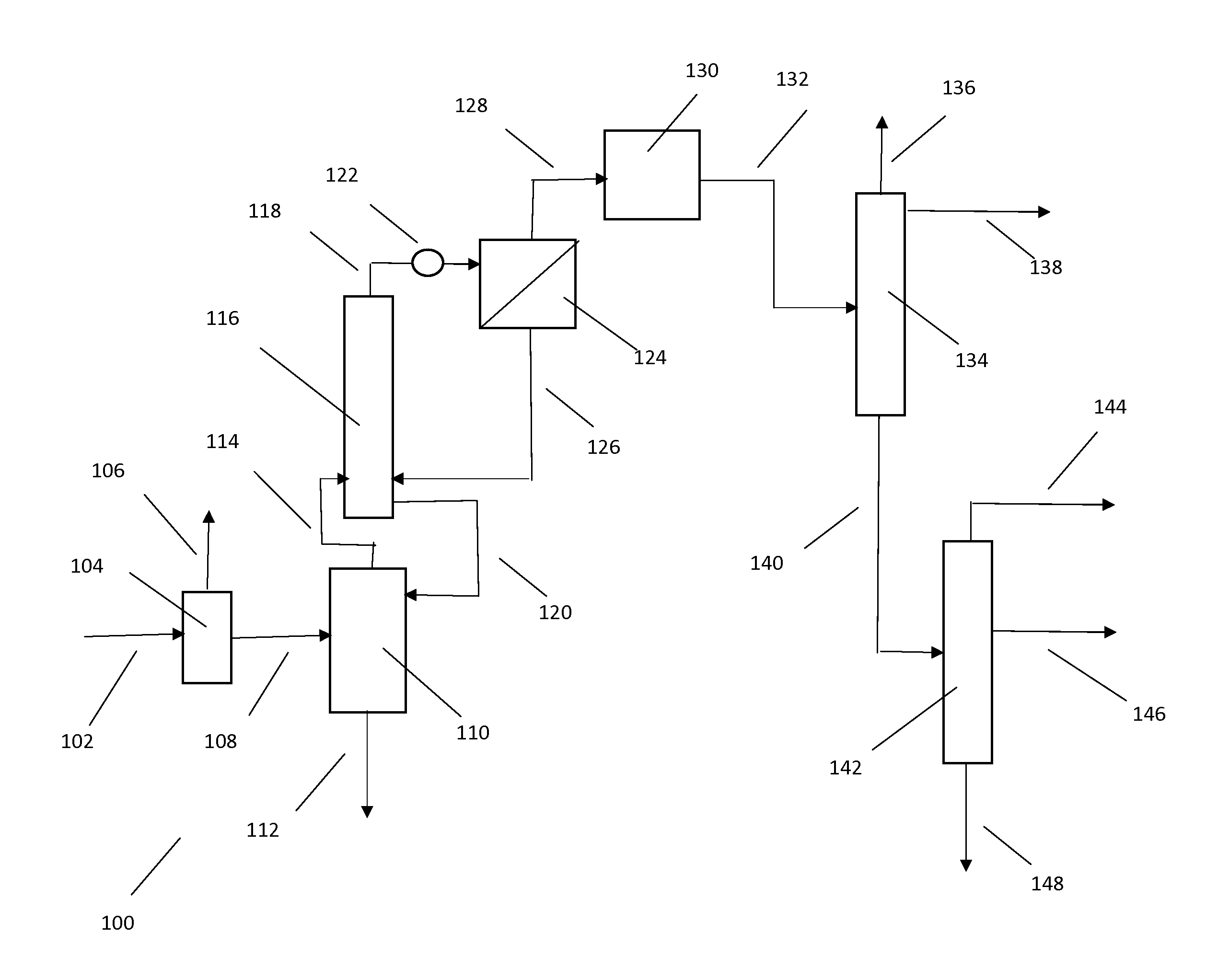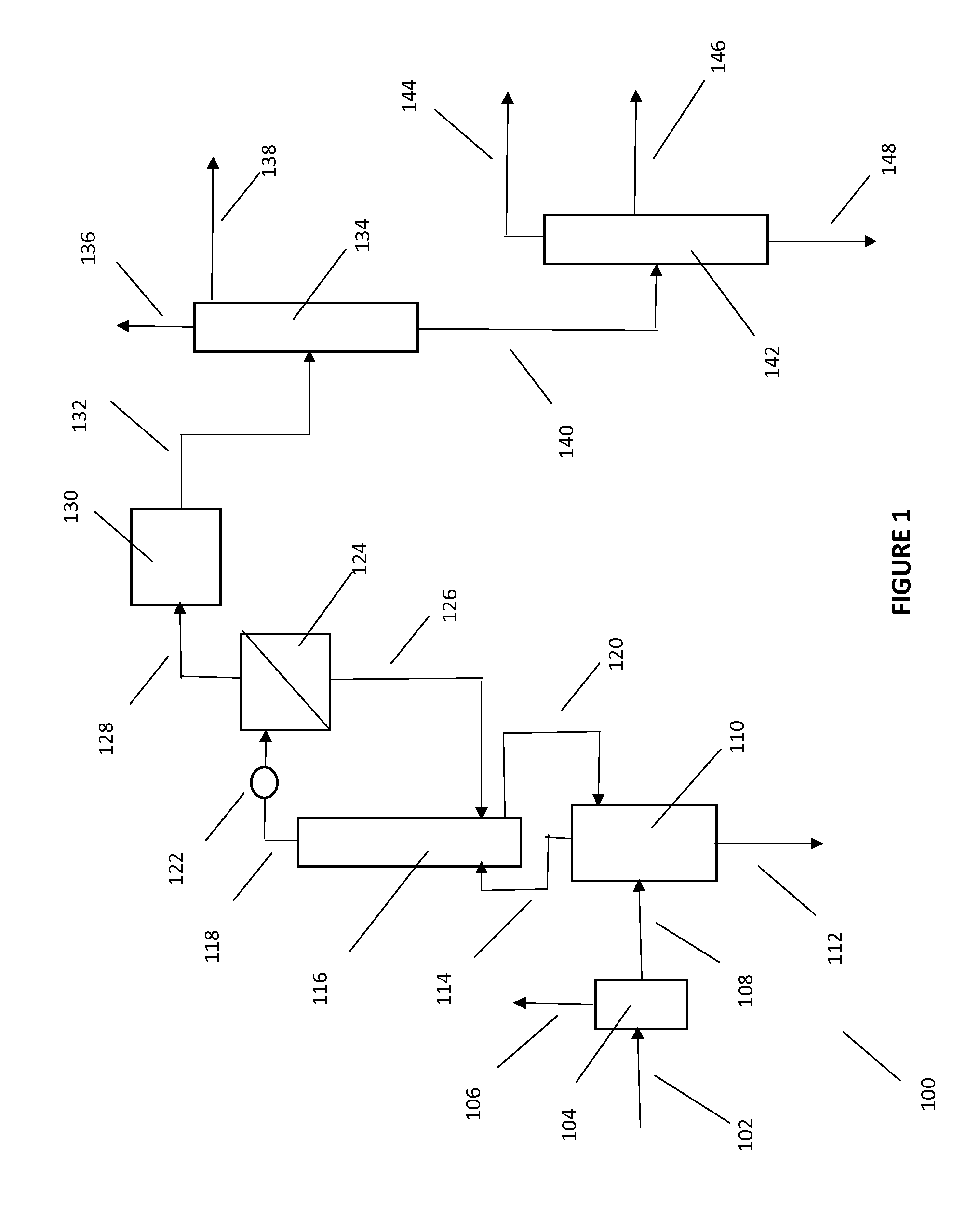Processes for the production of plural anhydrous alcohols
a technology of anhydrous alcohol and process, applied in the field of plural anhydrous alcohol production, can solve the problems of contaminating the fermentation broth, requiring considerable energy consumption, and reducing the recovery rate of discrete alcohol fractions, so as to achieve energy efficiency, avoid energy loss, and facilitate recovery
- Summary
- Abstract
- Description
- Claims
- Application Information
AI Technical Summary
Benefits of technology
Problems solved by technology
Method used
Image
Examples
Embodiment Construction
Definitions
[0014]As used herein, the following terms have the meanings set forth below unless otherwise stated or clear from the context of their use.
[0015]The use of the terms “a” and “an” is intended to include one or more of the element described, and unless explicit or otherwise clear from the context, an element recited in the singular is intended to include one or more of such elements.
[0016]A discrete product is a distillation fraction containing an oxygenated organic compound which fraction is substantially anhydrous and has a concentration of the oxygenated organic compound that is at least about 80, preferably at least about 90, mass percent of that fraction.
[0017]A desiccant is a material, preferably a solid that selectively absorbs water. Examples of desiccants include, but are not limited to, silica, activated charcoal, activated alumina, starch, calcium sulfate, calcium chloride, and molecular sieves.
[0018]Fractionation by distillation and distillation includes any sep...
PUM
 Login to View More
Login to View More Abstract
Description
Claims
Application Information
 Login to View More
Login to View More - R&D
- Intellectual Property
- Life Sciences
- Materials
- Tech Scout
- Unparalleled Data Quality
- Higher Quality Content
- 60% Fewer Hallucinations
Browse by: Latest US Patents, China's latest patents, Technical Efficacy Thesaurus, Application Domain, Technology Topic, Popular Technical Reports.
© 2025 PatSnap. All rights reserved.Legal|Privacy policy|Modern Slavery Act Transparency Statement|Sitemap|About US| Contact US: help@patsnap.com


